How to connect a motor from an old washing machine?
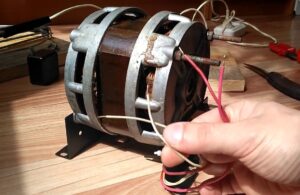 Typically, washing machines produced 15-25 years ago are equipped with either commutator or asynchronous motors. Inverter engines are already installed on more modern machines and are used for “secondary” purposes extremely rarely. Therefore, we will figure out how to connect the motor from an old washing machine. We'll tell you what you need to know, what are the features of including different types of devices in an electrical circuit.
Typically, washing machines produced 15-25 years ago are equipped with either commutator or asynchronous motors. Inverter engines are already installed on more modern machines and are used for “secondary” purposes extremely rarely. Therefore, we will figure out how to connect the motor from an old washing machine. We'll tell you what you need to know, what are the features of including different types of devices in an electrical circuit.
Single phase asynchronous motor
You can only find this type of engine on very old automatic and semi-automatic washing machines. Before attempting to connect the device, test it with a multimeter. Switch the tester to measure resistance and find the wires that “connect” with each other. The remaining two terminals are a pair of the second winding.
Then you need to understand which winding is which. This can be done “by eye” - the cross-section of the starting wires is smaller than the working ones. It is still better to determine the type of winding with a multimeter.
The starting winding will produce more resistance, and the working winding will produce less resistance.
The starting winding is necessary to create the primary torque. In most cases, it only functions for a few seconds after the engine starts. The working winding is needed to maintain the magnetic field of rotation; it is “active” until the engine is disconnected from the network.
In the engine circuit, in addition to two types of windings, there is also a contactor or capacitor with a capacity of 2 to 4 μF. If you plan to use the motor without loads, then you can do without these auxiliary devices. How do we understand the expression “no load”?
The design of the washing machine implies that a pulley with a drum will be connected to the motor shaft. The motor must spin the “centrifuge”, and at the moment of switching on it experiences an increased load, so the circuit must include a capacitor or “power supply” to the starting winding. If you plan to use the engine in more “gentle” conditions, then auxiliary devices that facilitate starting can be neglected.
If you have assembled a new device (for example, an emery machine or an apple slicer) using the motor from an old washing machine, and the motor gets too hot even after short-term operation, you need to take appropriate measures. There may be several reasons for this “overheating”:
- broken bearings;
- reduced “gap” between the stator and the rotor (because of this, the parts constantly rub against each other);
- an incorrectly selected capacitor, namely its too large capacity.
Checking whether the capacitor is at fault is quite simple. It is necessary to turn it off, and then the picture will become clear. If this is the case, the capacity of the starting device needs to be reduced.
There are single-phase motors with not four, but three terminals. This is because the two windings are already connected at one point to each other. In any case, when removing the motor from the washing machine, be sure to look at how the motor was connected to it. This will help you when creating your own electrical circuit for a homemade device.
Brush commutator “engines”
Such motors are found in most washing machines produced in the last 3 decades. Collector motors do not have a starting winding and do not require a capacitor to be included in the circuit. They are capable of “accepting” both direct current and operating on alternating current.
The commutator motor can have from 5 to 8 pins, depending on the model, but most of them are not useful for connecting the motor outside the washing machine.
First you need to find the terminals for connecting the Hall sensor; they will definitely not be needed during further operation of the motor outside the washing machine. Arm yourself with a multimeter and measure the resistance of the wires. The tachogenerator windings will give readings of about 60-70 Ohms.
The collectors also have a thermal protection contact. It produces zero resistance. And this conclusion can be classified as “unnecessary”.
To turn on the collector device in the circuit, voltage must be applied to the free terminal of the winding. Its second end is connected to the right electric brush. The left brush is connected to the 220-volt power supply. After such manipulations, the motor will begin to work and rotate unilaterally.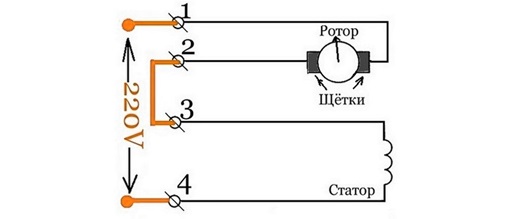
To change the direction of movement of the electric motor, you will have to swap the brushes. So, the right one will be powered from the network, and the left one will be combined with the winding wire.
Before starting, it is recommended to securely fasten the commutator motor, as it will start to run with a strong jerk and may damage its wiring.
In some cases, it may be necessary to adjust the number of revolutions of the commutator motor. For these purposes, you can use a dimmer. In this case, the power of the device must be greater than that of an electric motor.
You can purchase a special dimmer in stores that sell elements of ventilation systems. Since such devices are used to control the speed of the motors of supply ventilation and hoods.
Interesting:
Reader comments
- Share your opinion - leave a comment
Categories
Washing machine repair


For buyers

For users

Dishwasher

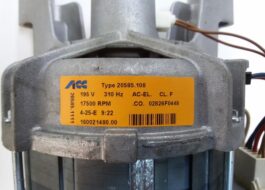
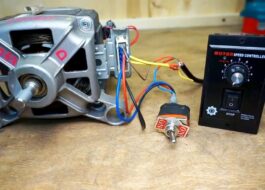
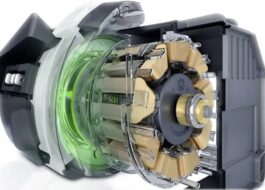
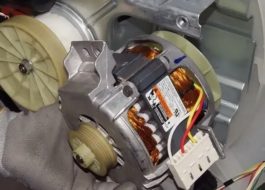
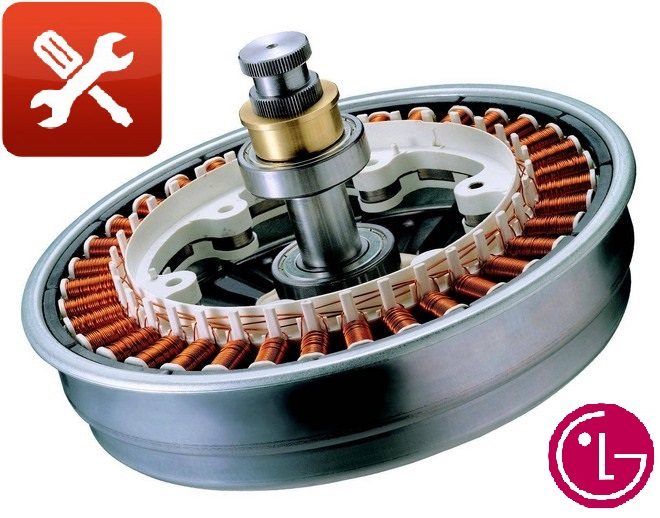
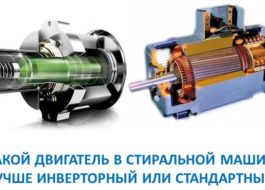










Add a comment